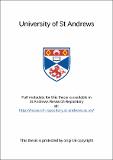Files in this item
Heavy mineral analyses and facies interpretations of part of the calciferous sandstone measures, Pittenweem, E. Fife, Scotland
Item metadata
| dc.contributor.advisor | Walton, E. K. (Ewart Kendall) | en |
| dc.contributor.author | Robertson, Alasdair E. | en |
| dc.coverage.spatial | 175p | en |
| dc.date.accessioned | 2021-04-08T08:57:03Z | |
| dc.date.available | 2021-04-08T08:57:03Z | |
| dc.date.issued | 1990 | |
| dc.identifier.uri | https://hdl.handle.net/10023/21825 | |
| dc.description.abstract | A vertical section of fluvio - deltaic sediments of Dinantian age is exposed along the coast in Fife. These sediments form a series of cycles and cycle types evolving by progradation into a shallow bay area at the eastern end of the Midland Valley. Analysis of the heavy fraction indicates provenance from a variety of rock types comprising the Caledonian Massif. Although certain suites can be identified it is impossible to determine absolutely the origin of the sediment due to transport and deposition effects. The analysis of the delta cycle patterns shows an increased importance of marine influences towards the top of the section resulting in limestone formation. The measured section shows five distinctive environments of deposition - swamp, splay, channel, overbank interdistributary and lagoon each with their own distinctive types of sediment, structure and sedimentation pattern. The overlying form is of a birdfoot lobate type delta similar to that of the Guadalupe Delta of Texas. | en |
| dc.language.iso | en | en |
| dc.publisher | University of St Andrews | en |
| dc.subject.lcc | QE264.F5R7 | |
| dc.subject.lcsh | Geology--Scotland--Fife | en |
| dc.title | Heavy mineral analyses and facies interpretations of part of the calciferous sandstone measures, Pittenweem, E. Fife, Scotland | en |
| dc.type | Thesis | en |
| dc.type.qualificationlevel | Doctoral | en |
| dc.type.qualificationname | MSc Master of Science | en |
| dc.publisher.institution | The University of St Andrews | en |
This item appears in the following Collection(s)
Items in the St Andrews Research Repository are protected by copyright, with all rights reserved, unless otherwise indicated.

